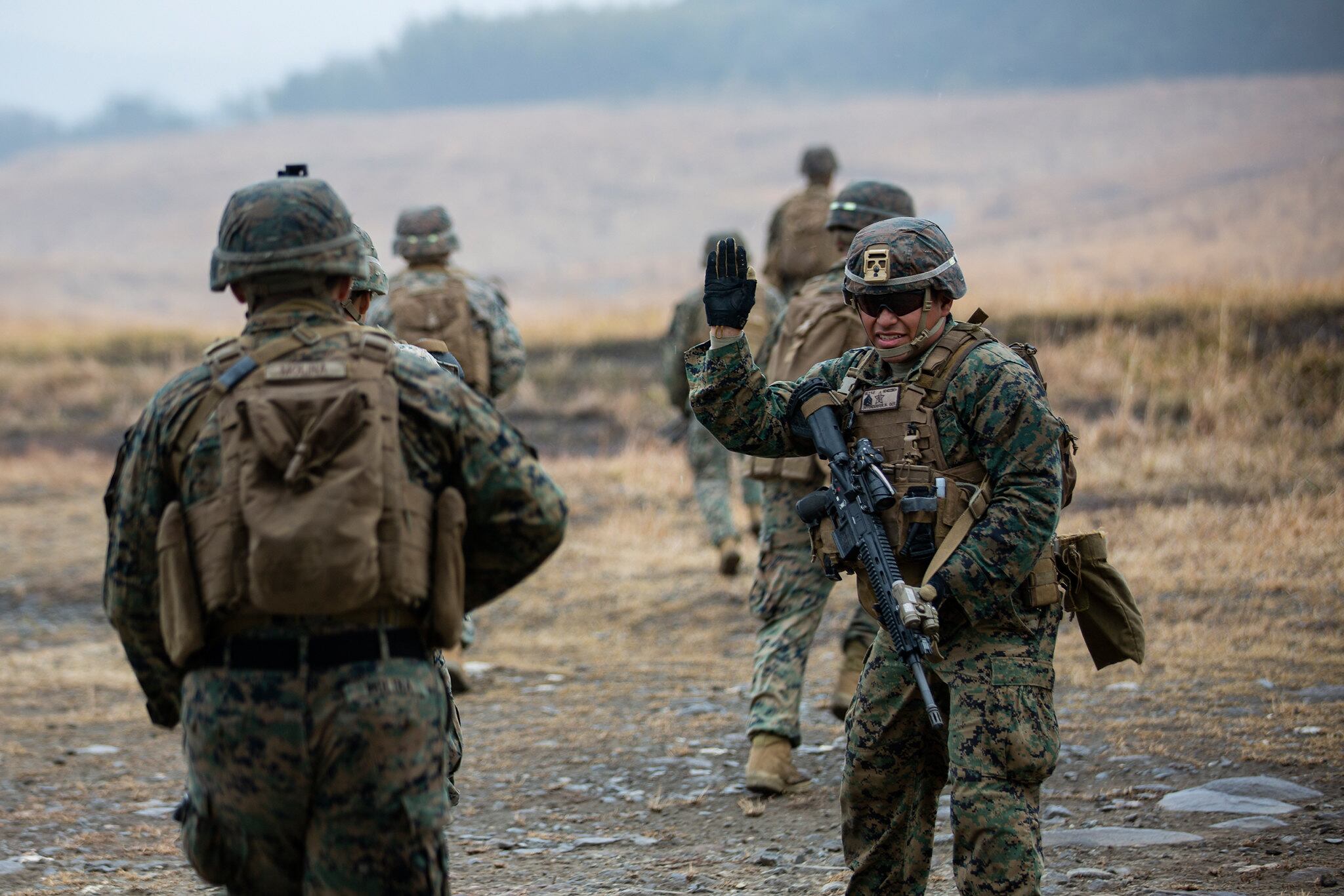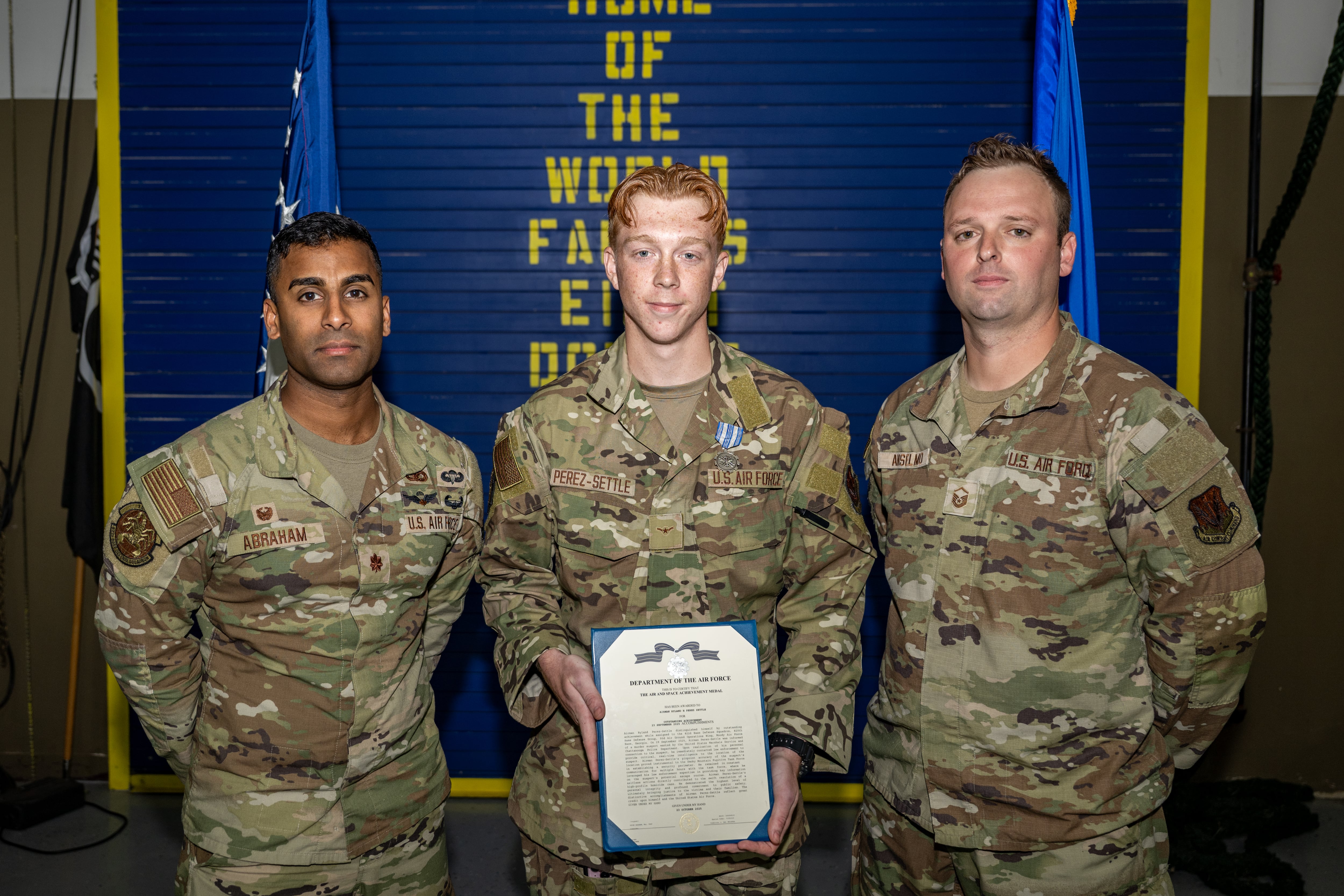The tri-service maritime strategy released on Thursday by the Navy, Marine Corps and Coast Guard painted a picture of China gaining strength and influence in the Pacific, threatening the “rules-based international order” and reminiscent of Imperial Japan in the decades prior to World War II.
To counter the modern Chinese threat, the three services will take a more aggressive posture toward China, while modernizing the force for a potential war, according to the strategy.
While the strategy lays out how the Marine Corps will use some of the new technologies it plans on acquiring, it did not lay out what the future of Marine infantry will be. That’s something the Corps is still working on, said Maj. Gen. Paul Rock Jr., director of the Corps’ strategy and plans division.
RELATED

The Marine Corps kicked off its modernization process with the release of Force Design 2030, which will see the Marine Corps ditching its tanks, refocusing its artillery community toward rockets and away from M777s, and fielding smaller infantry units and squadrons.
The money saved from the divestments will be used to buy ship-sinking missiles and better electronic warfare capabilities.
“Our operations will mass the effects of joint, sea-based, and land-based kinetic and nonkinetic fires,” the strategy said about how those new acquisitions will be deployed if war were to break out.
“Marine Littoral Regiments, as part of Marine Air Ground Task Forces and Marine Expeditionary Forces, will bring additional ISR, C2, and long-range fires capabilities,” the strategy added.
With missiles and sensor warfare, Marines will be focused on working with the Joint Force to sink ships and confuse the enemy, and the Marine Corps’ air wing will work alongside the Navy and Air Force to gain air superiority.
Absent from the 24-page strategy document was any mention of Marine Corps infantry, the historic focus of the Marine Corps.
“It is something that in truth we are still defining,” Rock told reporters on Thursday.
The Corps is currently conducting experiments on what the infantry’s role may be as part of the experimental “phase three” of force design, Rock added.
Phase three is expected to last around three years, and involves standing up three Marine Littoral Regiments that will be based out of Hawaii, Marine Corps Times previously reported.
The current idea for the infantry’s role will be smaller units made up of better trained and armed infantry Marines, Rock said.
The Corps is planning on running a pilot program in early 2021, extending the School of Infantry to 14-weeks, and is further considering combing all infantry military occupational specialties into one.
The extended training is meant to “make for a much more mature capable and dynamic infantry force,” Rock said.
The “commando -like” future Marine Corps infantry could be used to either provide security for advanced bases or to conduct its own raids into enemy territory, Rock said.
“Their application in a distributed maritime environment that we envision operating in, is probably limited only by your imagination,” Rock said.
Though the role of Marine Corps infantry was not laid out in the tri-service strategy document, its place within the Marine Corps is not questioned, Rock said.
“I can assure you that the Marine Corps is never going to not have infantry and its capabilities at the very center of who we are,” he added.





